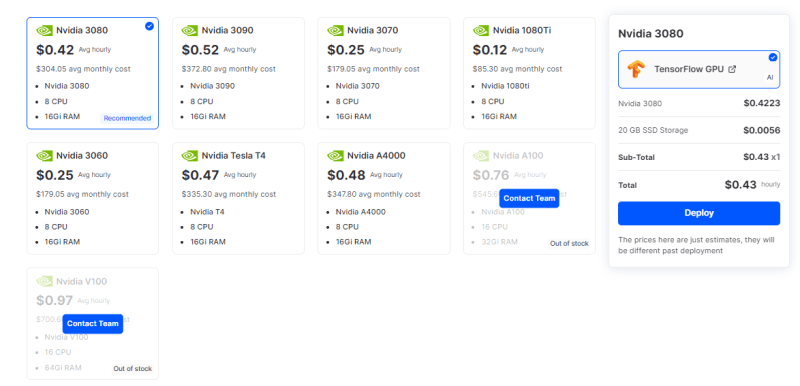Graphics processing units (GPUs) are undoubtedly one of the most valuable hardware assets in computing. NVIDIA, the GPU maker, announced in 2023 'surging demand' for its products and a quarterly revenue outlook of US $11 billion in an investor briefing, pushing its market value to over a trillion dollars. The immense value of GPUs is opening up new avenues of utilizing these high-performance chips, including decentralized computing, which has the potential to offer lucrative rewards through a killer crypto app opportunity.
It's important to note the key applications of GPUs to fully comprehend their significance. NVIDIA, the global leader in graphics card design, was established in the early 1990s to address the drawbacks of general-purpose computing chips. While CPUs are versatile programming tools, they are less than ideal for processing complex graphics. GPUs, on the other hand, are the go-to solution for all your graphics processing needs.
Rendering and the Potential of Decentralized Computing as a Game-Changing Opportunity in Crypto Apps
NVIDIA's breakthrough realization was that it could revolutionize 3D and multimedia tasks by utilizing chips with a graphics-specific instruction set and abundant cores, enabling unparalleled parallel processing. Take, for instance, NVIDIA's latest GeForce RTX 4090 graphics card , which boasts 16384 NVIDIA CUDA cores. Meanwhile, even the most high-end Intel i9 CPU has only 24 cores. The large number of cores allows GPUs to divide tasks on a massive scale, making them superior for a wide range of use cases. NVIDIA's success in the trillion-dollar club was attributed mainly to the rising demand for data centers and cloud computing. As more developers become aware of the capabilities of large language models (LLMs), they are integrating generative AI features into their enterprise applications.
The market for NVIDIA's products has been considerably buoyed by the fact that GPUs are ideal for training and fine-tuning LLMs. In Meta's AI Research SuperCluster, the phase one configuration featured 6,080 GPUs housed in 760 NVIDIA DGX systems. The GPU count is now upped to a massive 22,000 to add extra computing horsepower. According to Meta's technical team, available GPUs have increased from 6,080 to 22,000, lifting AI training performance by more than 2.5x.
It is essential to remember that the primary use of GPUs should not be overlooked amid the increasing popularity of generative AI. Graphics cards are significant because they contribute to computer-generated visuals, vital not solely for video games but also for various forms of entertainment and industrial applications, particularly in 2024.
The Power of Decentralized Computing
Decentralized computing, powered by blockchain technology, offers a network effect that could transform how we use computing resources. Blockchain GPU rendering networks, like Render Networks and Spheron Network, spotlight the potential of distributed computing as a game-changer in the crypto app landscape. These networks can harness the idle computing power of GPUs to perform tasks, such as rendering and mining, which is crucial for creating high-quality digital content for entertainment, industrial applications, and more.
Render Network
One example of decentralized computing's potential is Render Token, which leverages idle GPUs to monetize peer-to-peer processing of computer-generated images. This initiative, along with others like Golem, which has unveiled a GPU computing proof-of-concept, aims to democratize access to digital resources. These blockchain-based solutions are revolutionizing the way we use GPUs for rendering, opening up new possibilities for creative industries and beyond.
Spheron Network
Spheron Network is a decentralized computing platform that strives for fairness, making distributed resources accessible to all. Spheron Compute presents a robust and cost-effective alternative to centralized cloud services, priced at just one-third of the traditional cost. The goal is to democratize public cloud access, offering a more sustainable model for computing. The Spheron platform allows organizations and developers to deploy, run, and scale based on their needs, free from the limitations of centralized cloud environments.
Spheron satisfies decentralized requirements by providing Private images, Auto-scale instances, Scale on demand, Real-time instance metrics, Faster GPUs, Free Bandwidth, Terraform Providers and SDKs, Instance health checks, activity, shell access, and more. Spheron provides add-on storage solutions for long-term data storage and edge bandwidth acceleration through its global CDN. With Spheron, you can easily set up your nodes in just a few minutes and enjoy low maintenance and operations costs and a great developer experience.
Spheron provides GPUs like Nvidia V100, A100, A4000, Tesla T4, 3060, 1080Ti, etc, and has recently introduced a series of groundbreaking updates that have significantly enhanced the platform's capabilities! Spheron has scaled up its computing power in the US-East and West regions from 256 to over 1000 CPUs. They have expanded their global reach by adding a new APAC region in Singapore. This means you can enjoy faster and more efficient computations no matter where you are.
The Future of Crypto Apps
As the crypto industry evolves, decentralized computing is poised to become a killer ecosystem. It offers a solution to the middlemen's problem, providing a more transparent, secure, and efficient way to conduct transactions and access services. Whether it's through rendering networks, sports betting platforms, or other applications, decentralized computing is set to transform the crypto landscape.












Top comments (0)